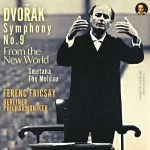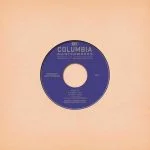

Composer: Antonín Dvořák
Performer: Petr Nouzovský
Orchestra: Czech Chamber Philharmonic Orchestra Pardubice
Conductor: Stanislav Vavrínek
Format: FLAC (tracks)
Label: Brilliant Classics
Catalogue: 95696
Release: 2022
Size: 701 MB
Recovery: +3%
Scan: cover
01. Silent Woods for Cello & Orchestra, Op. 68
Cello Concerto in B Minor, Op. 104
02. I. Allegro
03. II. Adagio ma non Troppo
04. III. Finale. Allegro Moderato
Serenade for Strings in E Major, Op. 22
05. I. Moderato
06. II. Tempo di Valse
07. III. Scherzo. Vivace
08. IV. Larghetto
09. V. Finale. Allegro Vivace
Antonin Dvořák (1841-1904) was a great synthesist, ingeniously combining arguably incongruent strains: folk music (Czech as well as American) with refined classical forms, romantic extroversion with instrumental austerity and national Czech character with worldwide appeal. The three compositions on this album were all created at turning points in Dvořák’s life, when radical changes in his situation impacted his creative career.
His Serenade for Strings was composed in 1875, the same year the impoverished musician became a successful composer almost overnight, after the publisher Simrock made Dvořák’s Moravian Duets a veritable bestseller, having agreed to work with him on the recommendation of Johannes Brahms. Each of the Serenade’s five movements is a variation on ternary (A–B–A) form. The resourcefulness with which Dvořák invents novel ways of returning from the middle section to the opening motive and key is astounding.
Silent Woods has much to do with Dvořák’s relocation to America. He was engaged to establish and direct a new National Conservatory in New York. Based on his now established ability to blend Czech folk music with large-scale classical forms it was hoped he would do the same in his new post with American folk music. The Czech transplant indeed soon found his bearings and set about creating a new tradition of American national music on the highest artistic footing. In 1892, before leaving his home for the United States, Dvořák gave something of a farewell tour of Czech cities, writing the cello version of Silent Woods for performance on these recitals. Ten years later, Dvořák created the version for cello and orchestra recorded here.
At the conclusion of his time in New York and on his return to Bohemia, Dvořák was focused particularly on writing his Second Cello Concerto. At first believing the cello an unsuitable instrument for concertante music, his mind had been changed on hearing a concerto by American virtuoso and composer Victor Herbert, and Dvořák’s masterpiece took on its definitive form in 1895. Disagreements over alterations suggested by the work’s intended first soloist led to the premiere being delayed until a performance in London by Leo Stern in 1896. Now, no other concertante composition for cello and orchestra is performed more frequently on the international stage.



